The timeless solution for managing your inbox – Part I
As David Allen, leading American productivity consultant and famous for his Getting Things Done (GTD) methodology says, the timeless solution for managing your ‘stuff’, regardless of whatever new technology is available, is having:
a process for capturing the things that need your attention
the mental rigour to clarify and decide what these things mean to you
a trusted system for organising the resulting to-do items
the personal discipline to take action
And this is so very relevant to the way we handle email each day.
This series of 5 short articles explains the process I teach in my ‘Revolutionise Your Inbox’ masterclasses and how it applies to the points made above. In this Part 1, we’ll look at a process for capturing the things that need your attention.
These days we have far too much going on in our work and personal lives to manage everything with just our mind or our memory. We need tools to help us manage and keep track of everything that requires our attention, energy and effort. In the past, we’ve had a range of paper-based productivity tools to help us manage all this - notebooks, to-do lists, diaries etc.
However, so much of our work is now generated electronically, and the majority of this via email, that it makes sense to use a range of electronic tools. In my world, and the world of most of my clients, Microsoft’s Outlook is that tool. And while so many of us are familiar with this software, we tend to only use 10% of its capacity. There is so much more power at our fingertips to better manage our email and our workload, but most of us are only vaguely aware of its true potential.
While Outlook (or its equivalent for those who use something else) is a great tool to process and manage all the things that need our attention, most of the good thoughts, ideas and insights come to us when we are NOT at our desk or computer. In fact, many times they pop into our head when we are in a place where it can be very hard to capture them – in bed at night, in the shower, going for a walk, driving the car etc.
What is your process for capturing these nuggets of gold and getting them out of your head so they don’t ‘nag’ you when you don’t need to remember them, or risk forgetting about them when you do? This is a critical skill nowadays. As David Allen has said;
“The mind is a great place for having thoughts . . . but not for storing them”.
A few years ago, a colleague told me about an excellent app for my phone that I have used most days since then. It’s an app that allows me to capture thoughts, ideas and to-do’s as a voice message, a text message or as an image/photo. Whichever of these I choose, when I click ‘send’, the message is sent to my inbox so that it’s been ‘captured’ and collected in a place where I can process it later.
The app is called Braintoss and I have found it an invaluable way of capturing things that need my attention and freeing up my mind to focus on the present moment and its demands. Another of these is called Memo Mailer. This one allows me to capture voice messages and send them to either my own inbox or to my EA – very handy when ‘on the go'. I’m sure there are other apps with similar functions.
So, there’s a reliable process for capturing the things that need our attention and sending them to the inbox.
In subsequent posts, I’ll discuss how to
process these inputs in the inbox in a way that captures the results of our thinking and decision-making in a trusted system
organises the resulting actions and
brings them back to our attention at the appropriate time
This process frees up our focus and attention and minimises the clutter of trying to manage all our workload and commitments ‘in our head’.
If you’re interested to learn more about how to get control of your email, revolutionise the inbox, reduce your stress and be more productive in the workplace, I’d welcome the opportunity to show you how to do this – for yourself, for your team or at your next conference.
Get in touch via email, or better still, give me a call.
